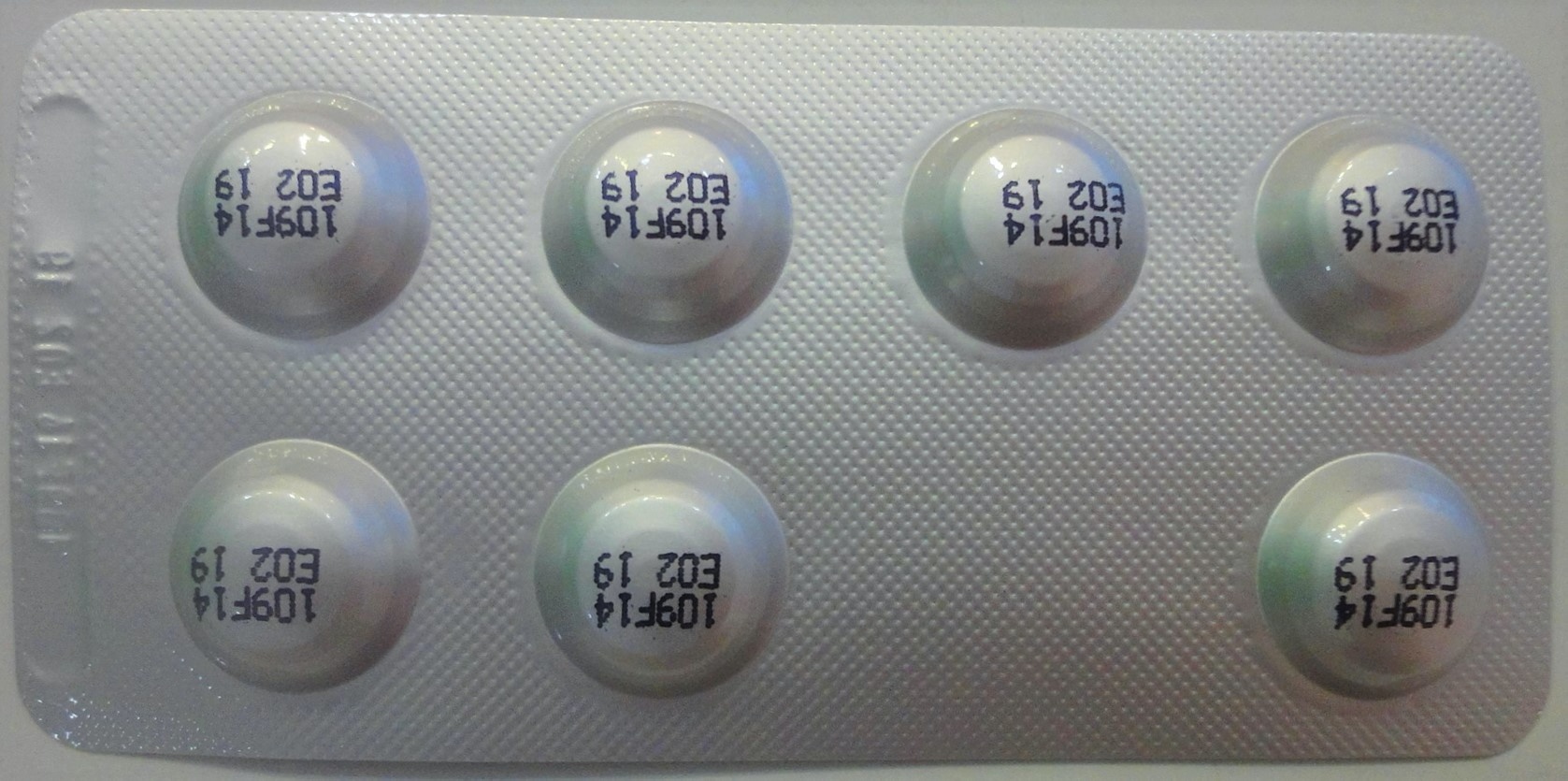NORPLAT Tablet
ក្រុមហ៊ុនផលិតឱសថ:
Getz Pharma(Pvt.) Limited, Pakistan.
ក្រុមហ៊ុនចែកចាយឱសថនៅប្រទេសកម្ពុជា:
ALLIANCE PHARMA CAMBODGE


- សារធាតុសកម្ម
- ប្រសិទ្ធិភាពព្យាបាល និង កម្រិតប្រើប្រាស់
- ហាមប្រើ
- ផលរំខាន
- អន្តរប្រតិកម្ម
- ស្ត្រីមានផ្ទៃពោះ និង ស្ត្រីបំបៅដោះកូន
- ការប្រុងប្រយ័ត្នជាពិសេស
- សកម្មភាពឱសថ បរិយាយប័ណ្ណឱសថ
-
សារធាតុសកម្ម
Clopidogrel 75mg
-
ប្រសិទ្ធិភាពព្យាបាល និង កម្រិតប្រើប្រាស់
Indications
- NORPLAT is indicated for the reduction of thrombotic events in patients with recent myocardial infarction, recent stroke, or established peripheral arterial disease.
- NORPLAT is used prophylactically in patients at risk of thromboembolic disorders such as myocardial infarction, peripheral arterial disease and stroke.
- NORPLAT is also indicated for acute coronary syndrome (unstable angina/non-Q-wave MI)
Dosage
NORPLAT can be administered with or without food.
- Recent MI, recent stroke, or established peripheral arterial disease: The recommended daily dose is 1 tablet daily.
- Prophylactic use in patients at risk of thromboembolic disorders such as MI, peripheral arterial disease and stroke: The recommended daily dose is 1 tablet daily.
- Acute coronary syndrome (unstable angina/non-Q-wave MI): Dose should be initiated with a single 300mg loading dose and then continued at 75mg once daily (with Aspirin 75-325mg once daily).
-
ហាមប្រើ
- Patients who have shown hypersensitivity to the drug or any component of the medication.
- Patients who suffer from active pathological bleeding such as peptic ulcer or intracranial hemorrhage.
-
ផលរំខាន
Clopidogrel is generally well tolerated. However, the following adverse effects have been reported during treatment.
Common: Gastrointestinal disturbances (Diarrhea, abdominal pain, indigestion and nausea) and dermatological reactions (rash, pruritis).
Less common: Chest pain, Nose bleeds.
Rare: Gastrointestinal bleeding, gastric ulcers, severe neutropenia or agranulocytosis, thrombocytopenia, thrombotic thrombocytopenic purpura, aplastic anemia, membranous nephropathy with nephrotic syndrome, loss of taste, acute arthritis.
-
អន្តរប្រតិកម្ម
Aspirin: A pharmacodynamic interaction between clopidogrel and aspirin is possible, leading to increased risk of blooding. Therefore, concomitant use should be undertaken with caution. However, clopidogrel and aspirin have been administered together for up to one year.
Heparin: A pharmacodynamic interaction between clopidogrel and heparin is possible, leading to increased risk or bleeding. Therefore, concomitant use should be taken undertaken with caution.
Warfarin: Because of the increased risk of bleeding, the concomitant administration of warfarin with clopidogrel should be undertaken with caution.
NSAIDs: In healthy volunteers receiving naproxen, concomitant administration of clopidogrel was associated with increased occult gastrointestinal blood loss. NSAIDs and clopidogrel should be co-administered with caution.
Drugs metabolized by CYP450: At high concentrations in vitro, clopidogrel inhibits P450 (2C9). Accordingly, it may interfere with the metabolism of phenytoin, tamoxifen, tolbutamide, warfarin, torsemide, flubastatin, and many NSAIDs,but there are no data with which to predict the magnitude of these interactions. Caution should be used when any of these drugs is co-administered with clopidogrel.
WARNING
Co-administration of Clopidogrel with Proton Pump Inhibitors (PPIs)
Patients should avoid using the Clopidogrel with Omeprazole, a proton pump inhibitor (PPI) used to reduce stomach acid. Clopidogrel does not have anti-clotting effects until it is converted or metabolized into its active form with the help of the liver enzyme, CYP2C19. Omeprazole blocks this enzyme, thereby reducing the effectiveness of Clopidogrel.
-
ស្ត្រីមានផ្ទៃពោះ និង ស្ត្រីបំបៅដោះកូន
Pregnancy
Clopidogrel has not been studied in pregnant women. It should be used during pregnancy only if clearly needed.
Nursing Mothers
It is not known if clopidogrel is excreted in human milk. Because many drugs are excreted in human milk, caution should be exercised when clopidogrel is given to a nursing mother.
-
ការប្រុងប្រយ័ត្នជាពិសេស
Precautions
General
- Clopidogrel should be used with caution in patients who may be at risk of increased bleeding from trauma, surgery, or other pathological conditions.
- If a patient is to undergo elective surgery, consideration should be given to stopping clopidogrel 5 days before surgery.
- Clopidogrel should be used with caution in patients who have lesions with a propensity to blood (such as ulcers). Drugs that might induce such lesions should be used in caution in patients taking clopidogrel.
Hematological
Clopidogrel should not be administered to patients with hematopoietic disorders such as neutropenia or thrombocytopenia, hemorrhagic diathesis or other hemorrhagic disorders associated with a prolonged bleeding time. Full blood count should be performed before starting treatment and every two weeks during the first three months of therapy. If clopidogrel is discontinued during this period, a full blood count should be performed within two weeks of stopping treatment.
Hepatic Impaired Patients
Experience is limited in patients with severe hepatic disease, who may have bleeding diatheses. Clopidogrel should be used with caution in such patients.
Renal Impaired Patients
Experience is limited in patients with severe renal impairment. Clopidogrel should be used with caution I such patients.
Pediatric Use
Safety and effectiveness in the population have not been established.
Pregnancy
Clopidogrel has not been studied in pregnant women. It should be used during pregnancy only if clearly needed.
Nursing Mothers
It is not known if clopidogrel is excreted in human milk. Because many drugs are excreted in human milk, caution should be exercised when clopidogrel is given to a nursing mother.
-
សកម្មភាពឱសថ
Clopidogrel is an inhibitor of platelet aggregation, that is, a drug that inhibits the ability of platelets to clump together as part of a blood clot.
It appears to act by blocking the adenosine phosphate (ADP) receptors, which prevents fibrinogen binding to the receptor. This decreases the ability of platelet adhesion and aggregation. Clopidogrel is a prodrug and requires biotransformation to produce inhibition of platelet aggregation. The active metabolite of clopidogrel also inhibits platelet aggregation induced by agonists other than ADP by blocking the amplification of platelet activation by released ADP.
*ព័ត៌មានឱសថត្រូវបានរៀបរៀងដោយ អ៊ីម៉ាតុគឹ មេឌីក (ខេមបូឌា) ដោយផ្អែកលើប្រភពព័ត៌មានខាងក្រោម។ សម្រាប់ព័ត៌មានលម្អិត សូមស្វែងរកនៅក្នុងក្រដាសព័ត៌មាននៃឱសថនីមួយៗ ឬ សាកសួរទៅកាន់ក្រុមហ៊ុនឱសថឬតំណាងចែកចាយនៃឱសថនីមួយៗ។
ប្រភពព័ត៌មាន៖
- ក្រដាសព័ត៌មាននៃឱសថសម្រាប់អ្នកជំនាញវេជ្ជសាស្ត្រដែលប្រើប្រាស់នៅប្រទេសជប៉ុន (Pharmaceutical and Medical Devices Agency, Pmda): https://www.pmda.go.jp
- ព័ត៌មានសង្ខេបនៃឱសថសម្រាប់អ្នកជំងឺដែលប្រើប្រាស់នៅប្រទេសជប៉ុន: http://www.rad-ar.or.jp
